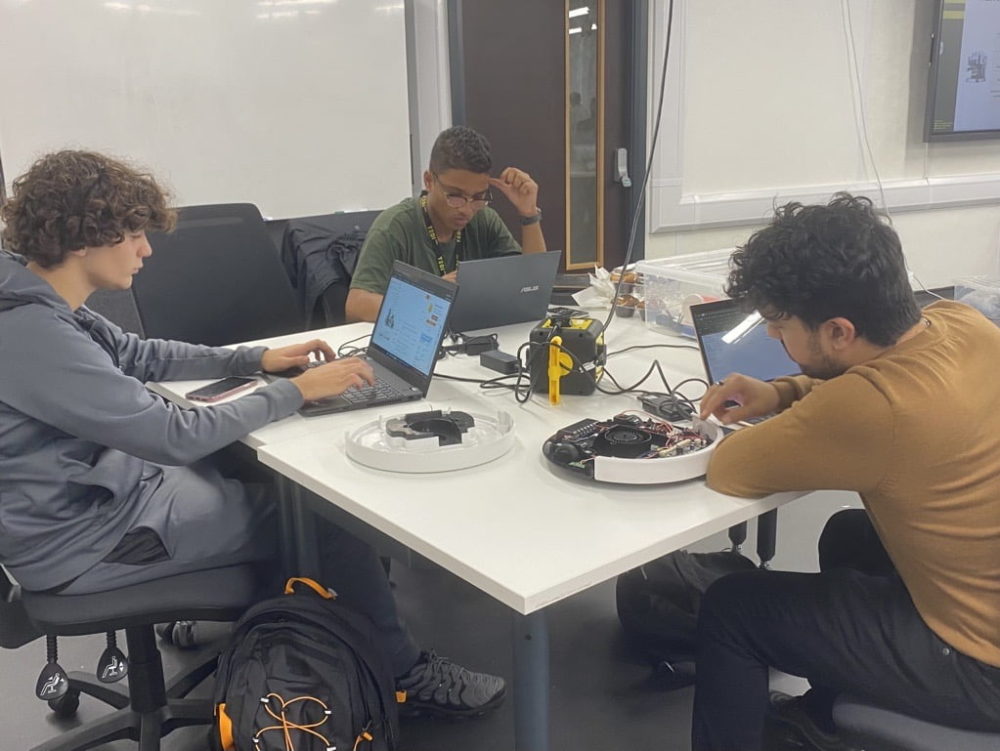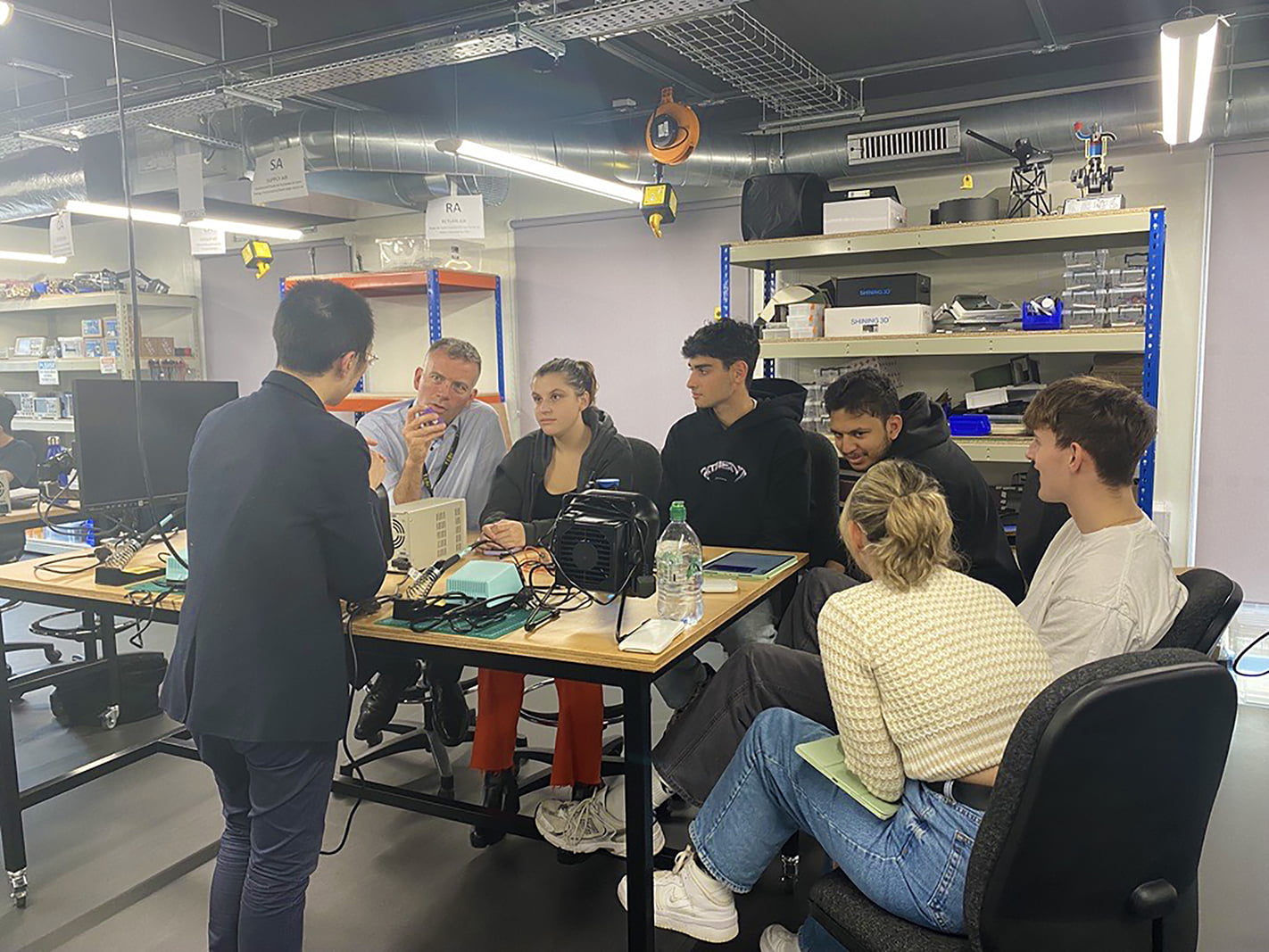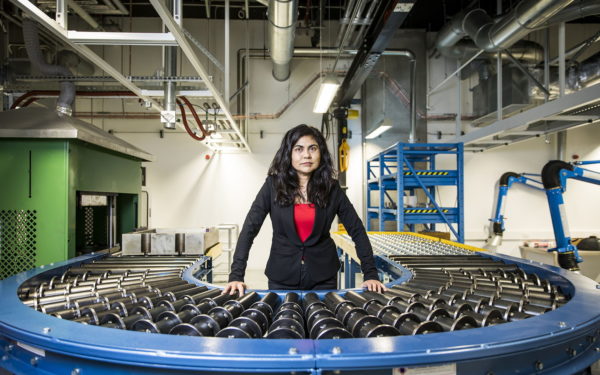
Reverse engineering a robot: student reflections

It’s been a month since term started for our students, and campus has been busy as our new first years have started to adjust to TEDI-London life. Following enrolment and induction sessions, our 2022 cohort has already started to carry out hands-on project work as part of the Reverse Engineering module.
We caught up with some of our new students to see how they’re finding their journey so far, as well as what their early project work involves!
Reverse Engineering for Design
Our first year students are currently using reverse engineering techniques to take apart and analyse a Robot Vacuum Cleaner, a commonly used household device. A Robot Vacuum Cleaner is a self-propelled floor cleaner which contains a rotating brush and an air-driven turbine to pick up dirt and debris from carpets and hard floors. The device is designed to work on its own, using optical and mechanical sensors.
In this project, students are aiming to develop their understanding of some of the most fundamental aspects of engineering – such as analytical, measurement, and experimental investigation techniques – in a hands-on and practical way. Taking the device apart is helping them to learn the engineering science of each individual internal component, how they fit together, and the overall requirements of the product.
The student teams have already taken some of the steps needed to achieve these learning outcomes:
“We’ve already taken the vacuum apart, so right now we’re going through each of the components and materials to work out the quantities we need, as well as how much they cost. We’re also working on the calculations for both the robot acceleration – to see how fast the vacuum can move -, and the gear ratio for the robot’s inner motors to see how fast they’re spinning – which will affect how well the product works. Lastly, we’re working on our SOP (Subtract and Operate Procedure), to determine which parts of the product are essential, and to clearly set out how it can be dissembled and reassembled safely.”
Mario, Nick, and Zain, first year TEDI-London students
Our students have been tasked not only with identifying part and component functions, but also with developing a technical document which records the location of each part within the assembly. They are also required to analyse the product’s ability to meet customer needs, as well as how well the product’s design would facilitate repair-work if needed. Each of these skills is useful at key stages of the design processes that engineers complete in the world of work.

Student reflections
We also chatted to Emily, Abdul-Aziz, and Alison, to hear their overall thoughts on the module, as well as life at TEDI-London so far:
“The hands-on style of learning has really helped me pick up the technical aspects of the module more easily than I think I would’ve otherwise. When I think back to week one, I didn’t always understand all of the theory, but as we’ve started to actually dismantle the robotic vacuum and see how it works ourselves, my knowledge has improved naturally. Suddenly I’m using mechanical terms like ‘rotating impeller’, which I hadn’t even heard of until a few weeks ago!”
Emily, first year TEDI-London student
“I previously enrolled at a different university, but decided to apply to TEDI-London instead as the project-based learning style appealed to me. Now I’m here, it’s a different experience to what I had before; back then it was just me and my paper, whereas at TEDI-London I feel like I’m part of something more. I prefer to work within a group where everyone contributes in their own way.”
Abdul-Aziz, first year TEDI-London student
“The module so far has been really fun and interesting; even though it’s work, it’s never boring. We also have lots of close interactions with the teaching staff, which makes it really easy for us to ask questions and voice our ideas out loud.”
Alison, first year TEDI-London student
Want to learn more about this module? Read about last year’s Reverse Engineering project, which featured HRV (Heat Recovery Ventilator) units!
More News articles


Alumni story: Natasha’s journey to the energy sector
